Cross-Campus Collaboration Takes Abilities-First Approach to Inclusion in the Workplace
- Sriram Narayanan, Ph.D.
- Eli Broad Endowed Professor, Department of Supply Chain Management
- Broad College of Business
Project Overview
- MSU researchers are taking an abilities-first approach to optimizing the workplace for people living with disabilities.
- A transdisciplinary team is testing and developing innovative solutions on apparel production lines at Peckham, Inc., a nonprofit that provides job training and employment opportunities to people living with disabilities.
Products/Outcomes
- Increase the number of people with disabilities in the workforce.
- Understand how to build on human abilities through augmented reality and workflow redesign.
Partners
- Hung Jen Kuo, Assistant Professor, College of Education
- Ranjan Mukherjee, Associate Dean for Faculty and Administrative Affairs, College of Engineering
- Charles Owen, Associate Professor, College of Engineering
- Peckham, Inc.
- Rajiv Ranganathan, Associate Professor, College of Education
- SourceAmerica
Form(s) of Engagement
- Community-Engaged Research
- Community-Engaged Service
The gentle hum of more than 2,000 sewing machines is a familiar sound to the 700 employees working in Peckham’s manufacturing facility as team members connect the fabrics that, in their final stage, will be used by the U.S. military. For Sriram Narayanan, a professor with MSU’s Broad College of Business, that steady hum was once unfamiliar, but a partnership with the Lansing-based nonprofit changed that nearly 11 years ago.
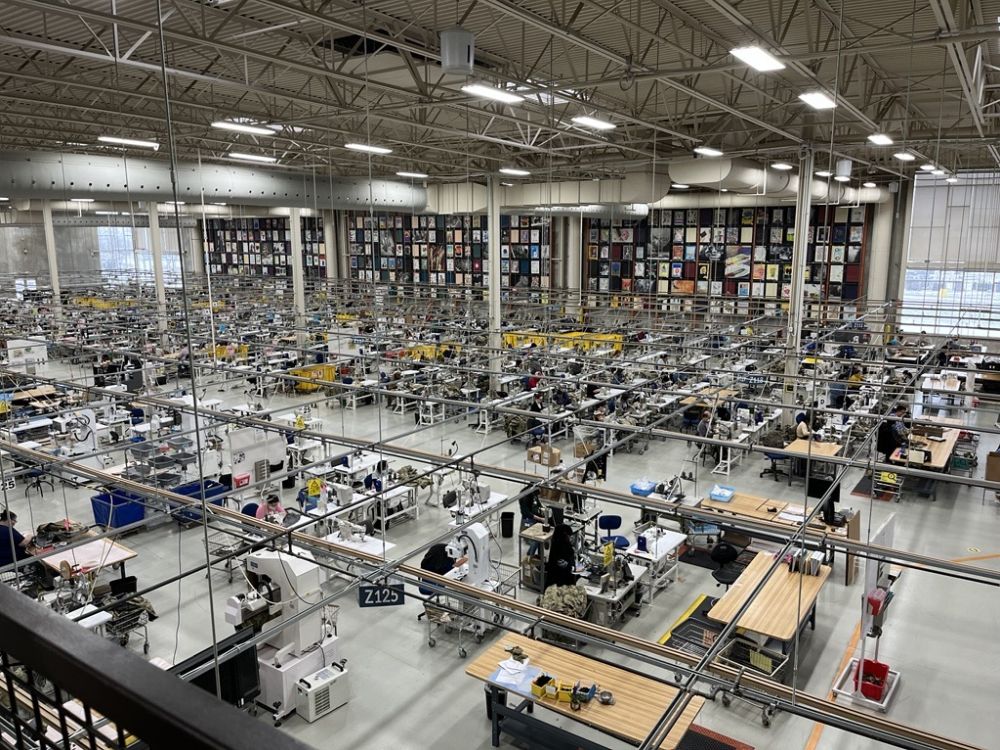
Peckham’s apparel manufacturing lines are the focus of MSU researchers’ abilities-first project.
In 2014, Narayanan was introduced to Peckham while serving as one of MSU’s Lilly Fellows. In this role, he mentored students as they participated in service-learning opportunities with organizations across the state. During that time, one of Narayanan’s student teams worked on a Peckham-sponsored project related to lean manufacturing, igniting a decade-long partnership between him and Peckham.
Peckham is a nonprofit community vocational rehabilitation organization providing job training and competitive employment opportunities to people living with significant physical, emotional, and developmental disabilities, autism spectrum disorders, visual impairments, and more. One line of business Peckham provides is the mass manufacturing of U.S. military clothing and equipment on apparel production lines.
With a background in business and research interests related to socially responsible and inclusive operations, Narayanan found an ideal partner in Peckham.
“I always knew I wanted the focus of my work to be both impactful and socially relevant,” Narayanan said. “It took me some time to better understand the concept of inclusive manufacturing, but Peckham’s leadership was very supportive of exploring ways we could work together.”
Since 2014, Narayanan has collaborated with many scholars, including Hung Jen Kuo, assistant professor, College of Education, and the Peckham staff. Together, their research aims to better understand the impact of disability diversity on the productivity of apparel production lines, the influence of individuals with disabilities in leadership roles on the productivity of apparel production lines, and how the productivity of individuals across different disability types compares to productivity of individuals without disabilities.
Sarah George, director of mission initiatives at Peckham, said the relationship with Narayanan has blossomed since their partnership began. “He really has a passion for disability employment and for making a real difference in the disability community,” she said.
Collaboration Expands
While Narayanan and Kuo were working with Peckham, Ranjan Mukherjee, associate dean for faculty and administrative affairs with the College of Engineering, and Rajiv Ranganathan, associate professor, College of Education, were approached to assist a local child using their expertise in kinesiology and robotics.
“In parallel to Sriram and Hung Jen, Rajiv and I were working with a student who was born without limbs to help reduce his dependence on caregivers,” Mukherjee said. “We started developing a robotics system that would help him do simple manipulation tasks, like drink from a cup.”
Mukherjee and Ranganathan pooled their expertise to create a body-machine interface, which allowed the student to become more independent.
In discussing the project with Narayanan, they determined that a natural collaboration could come from their collective expertise, and together they could create solutions to better assist people working in apparel production at Peckham.
The team, now consisting of Narayanan, Kuo, Mukherjee, and Ranganathan, realized there was one area of expertise they needed to round out their team: computer science.
Charles Owen, an associate professor in computer science and engineering, College of Engineering, had the background they were looking for.
The Multipronged Approach to Abilities First
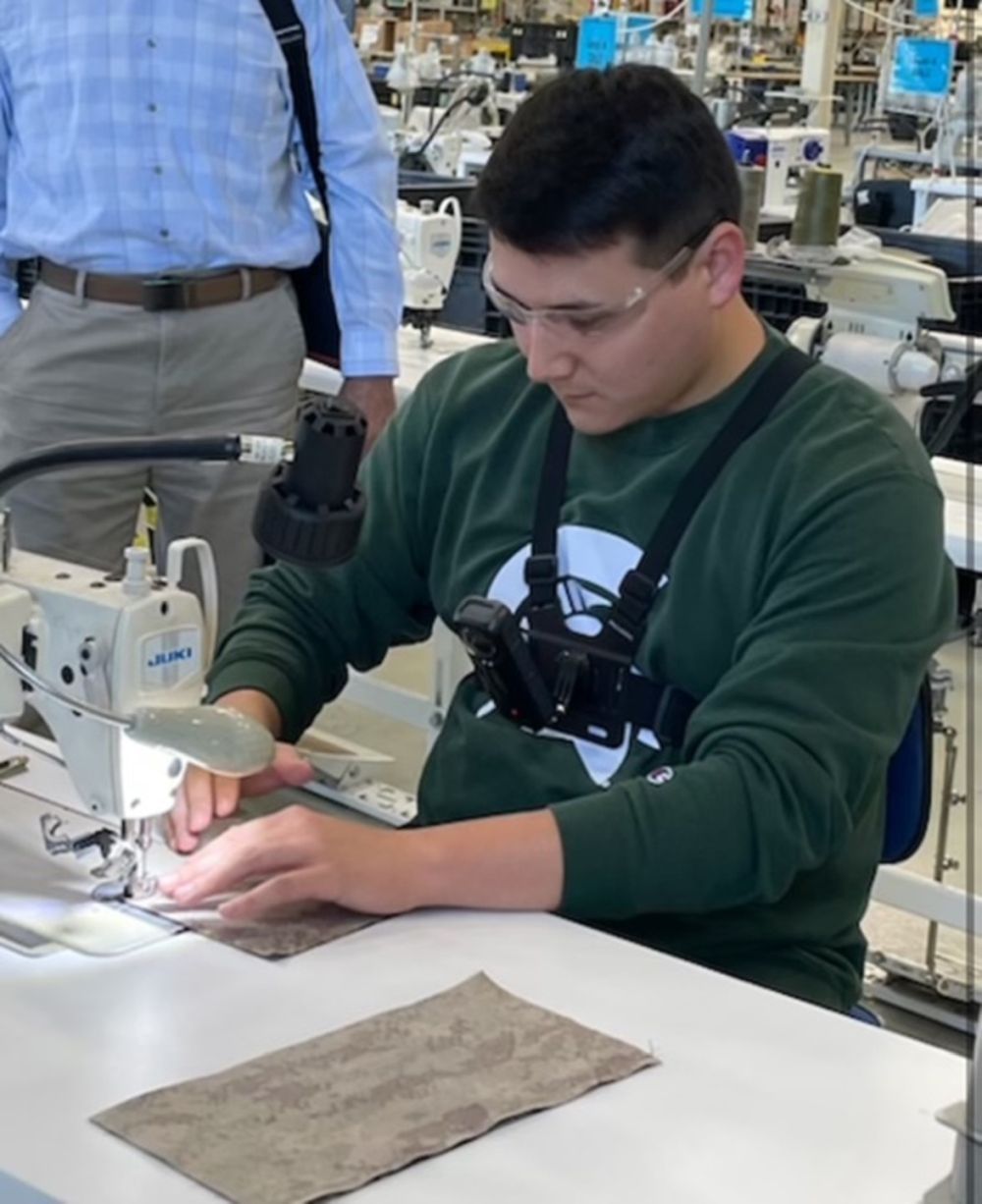
MSU Ph.D. student Michael Yeomans participates in a Sewing 101 class to better understand processes and challenges Peckham employees may encounter.
“We started working on a proposal to get seed funding to focus on disability inclusion in the workforce,” said Mukherjee, who is co-PI on the project. “Our goal was to increase the number of people with disabilities in the workforce, and Peckham was our launching pad.”
They submitted their proposal to MSU’s Strategic Partnership Program and were awarded funding to further develop their ideas and research goals. This led to a $2 million grant from the National Science Foundation to take an abilities-first approach to empowering people with disabilities in the workforce in three areas: individual abilities, augmentation of human abilities, and workflow redesign.
“We call our project an ‘abilities first’ project, so our goal is not to think about disabilities as deficits in abilities but rather think about the unique skills people with disabilities bring to the table,” Ranganathan said. “We’re looking at how we can rework the things around them to make the workplace more efficient for them.”
Kuo has a background in vocational rehabilitation and a very good understanding of psychosocial aspects in the abilities-first context. He focuses on identifiers like an individual’s motivation and how they work in teams, emphasizing the importance of considering more than a person’s dexterity or cognitive skills alone, but rather the individual as a whole.
One of their project’s goals is to identify how to measure and better understand individual abilities and use that information to feed into the other two focus areas—augmented reality and workflow redesign, Ranganathan said.
Augmented reality (AR) is a type of technology that relies on computer science and adds digital elements to the real world.
“When we say, ‘augmented reality,’ we’re talking about how we can augment the perception of the world from the point of view of the user,” Owen said. “And there are several ways to do that including physical augmentation, like using robots to physically help individuals, and visual augmentation, which ... projects elements into the worker’s space.”
In addition to using less invasive approaches, like projective AR, Owen said they’re also using feedback mechanisms that respond to change in order to improve processes. “We’re looking at mechanisms that provide feedback through the feet,” Owen said. “If you’re drifting off of your work area, or your seam allowance gets out of bounds, you may experience vibrations similar to steering wheels in cars when you veer out of lane or force feedback forcing you to slow down if you’re moving too fast and getting out of bounds.”
When it comes to workflow redesign, Narayanan said the team is trying to be thoughtful about the importance of efficiency and accommodations, “Part of the motivation for us as a group in trying to think about the three elements is to identify how people can be more gainfully employed and happy,” he said.
Instant Feedback
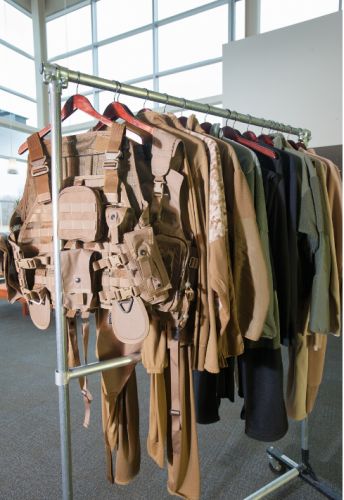
Peckham mass manufactures complex military clothing and tactical protective equipment for the U.S. military.
Mukherjee says the transdisciplinary team visits Peckham regularly to better understand the workflow and production processes. “We have gone together as a whole group and in subgroups to focus on the different areas,” he said. “We focus a lot on a class called Sewing 101 where new employees come and learn how to sew.” He added with a chuckle that the team discovered it was not as easy as it looks.
The team also focused on different production lines to identify how employees work to produce the clothing and the timeline they need to work within, he said.
Ranganathan added, “Usually, we work on problems geared toward an academic audience, but going to Peckham and seeing exactly what problems the employees are having provides a lot of grounding to what we’re doing. We better understand specific issues of Sewing 101 or a particularly challenging production line, and that has helped a lot in shaping the kind of problems we’re working on.”
Peckham’s George agreed, “They really want to be on the ground meeting people with disabilities on the manufacturing team,” she said. “They spent a lot of time trying to deepen their understanding of how we do our work.”
The team also participates in monthly meetings with manufacturing leadership at Peckham as well as SourceAmerica, a national nonprofit that connects government customers with a nationwide network of nonprofit agencies that provide employment opportunities for people with disabilities. Much of Peckham’s work is done in collaboration with SourceAmerica, and in this project, SourceAmerica’s role is to assist in scaling the solutions the transdisciplinary team finds.
Their discussions allow the MSU team to provide updates on progress, offer new ideas, and get immediate feedback from Peckham and SourceAmerica.
One of the transdisciplinary ideas is similar to lane-assist technology in cars. When employees are learning to sew, it can be challenging to maintain a certain seam allowance—or distance from the edge of the fabric to the seam stitch line, Mukherjee said. To reduce the number of finished products being discarded, the team is using a vision system that will immediately detect if a seam allowance is within its limits and provide feedback to the sewer. That feedback may be to slow down the machine or vibrate the sewing pedal, similar to a car’s response to veering out of a lane.
While the technology is not fully developed, both Peckham and SourceAmerica were excited about the potential. “The transdisciplinary team is working on testing and developing innovative solutions that may have a more direct impact on the manufacturing environment at Peckham,” George said. “They are still in the development phase, so the learnings aren’t translatable yet, but the team’s approach has been holistic and rooted in our employees’ experience, which has helped inform their work.”
Next Steps
The team is in their second year of the grant. While the solutions they’re currently developing may initially only translate to Peckham and apparel production lines, they’re hopeful about the potential translational impact of their work across other manufacturing units as well.
While that in itself is certainly something to look forward to, they also highly value the opportunity that working together brings.
“Expanding our team and working across colleges is exciting because I get to learn some really cool things from my colleagues that I wouldn’t have gotten to previously,” Narayanan said. “We’ve grown quite a bit from the first study we put together, and it’s been very challenging, but we’re building something greater together than anyone’s individual effort could do alone.”
Meet the team
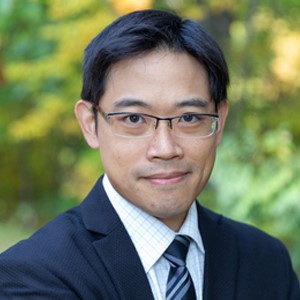
Hung Jen Kuo
College of Education
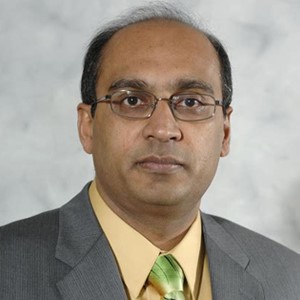
Ranjan Mukherjee
College of Engineering
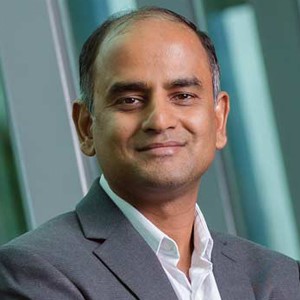
Sriram Narayanan
Broad College of Business
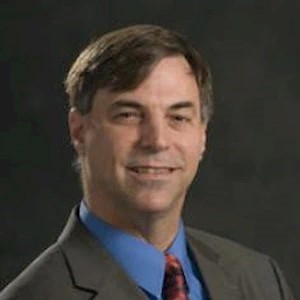
Charles Owen
College of Engineering
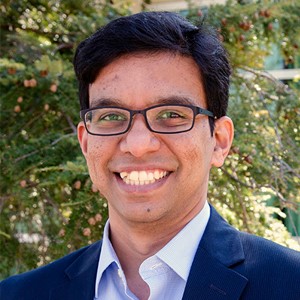
Rajiv Ranganathan
College of Education
- Written by Emily Springer, University Outreach and Engagement
- Photographs courtesy of Peckham, Inc. unless otherwise indicated.